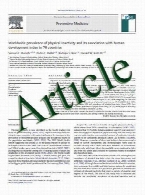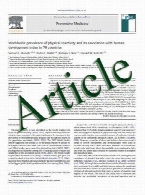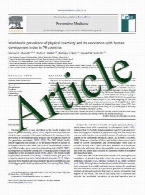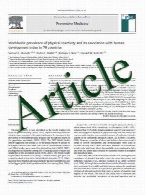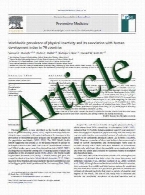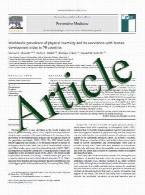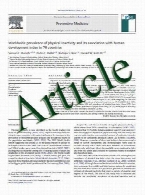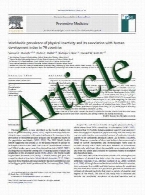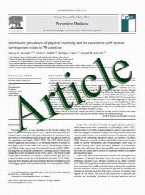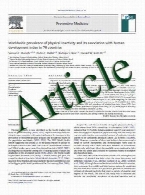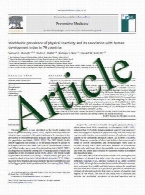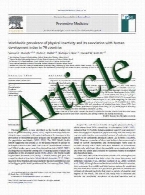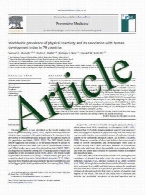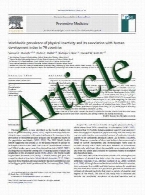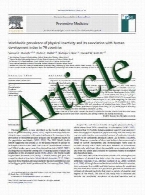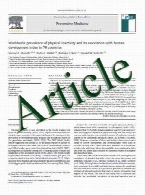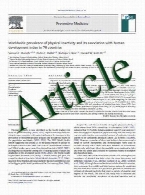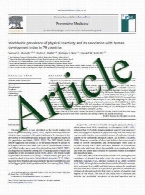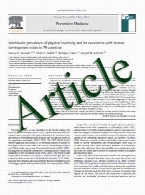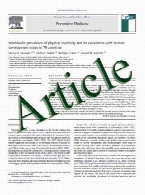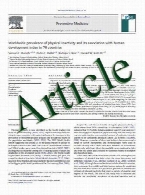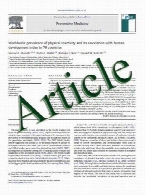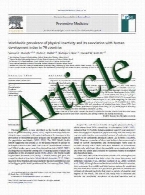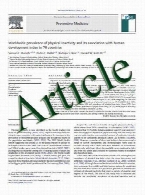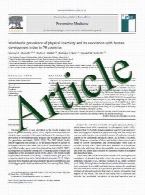

Mitochondrial amplification sel ...
The metabolic phenotype of cancer, characterized by uncoupled mitochondrial respiration and increased mitochondrial oxidative stress, is an attracti ...
Combined effects of MDM2 SNP309 ...
The MDM2 oncoprotein regulates the p53 pathway and, while functional polymorphisms of the MDM2 and p53 genes have been investigated for association ...
Aberrant DNA methylation but no ...
CBP/p300-interacting transactivator with EDrich carboxy-terminal domain 4 (CITED4) inhibits HIF-1a transactivation by binding to CBP/p300. We hypoth ...
Childhood factors associated wi ...
Growth and development factors could contribute to the development of breast cancer associated with an increase in mammographic density. This study ...
Elevated PCNA+ tumor-associated ...
African American and Hispanic women develop more triple negative breast cancer at younger ages than Caucasian women. The frequently observed associa ...
Targeting low molecular weight ...
Low molecular weight cyclin E (LMW-E) plays an important oncogenic role in breast cancer. LMWE, which is not found in normal tissue, can promote the ...
The prognostic significance of ...
Although the favourable role of T lymphocyte populations in different tumour types is established, that of B cells is still a matter of debate and n ...
Androgens and musculoskeletal s ...
Aromatase inhibitors (AIs), the adjuvant hormonal treatment of choice for postmenopausal estrogen receptor-positive breast cancer, are associated wi ...
First-line bevacizumab in combi ...
Despite extensive evaluation of first-line bevacizumab- containing therapy in randomized trials in locally recurrent/metastatic breast cancer (LR/mB ...
Pilot and feasibility study: pr ...
Normal mammary gland homeostasis requires the coordinated regulation of protein signaling networks. However, we have little prospective information ...
Effect of false-positives and w ...
False-positive results may influence adherence to mammography screening. The effectiveness of breast cancer screening is closely related to adequate ...
Prognostic value of acquired un ...
Many studies have examined DNA copy number changes or gene expression profiling and their association with clinical outcomes in breast cancer. Howev ...
Keratin 15, transcobalamin I an ...
Breast phyllodes tumors are rare neoplasms which present challenges for histological classification. Microscopic features are not always predictive ...
ErbB1/2 tyrosine kinase inhibit ...
Overexpression of epidermal growth factor receptors (ErbB) is frequently seen in inflammatory breast cancer (IBC). Treatment with ErbB1/2-targeting ...
Evidence for a link between TNF ...
Intracellular signaling mediated by the receptor activator of nuclear factor-jB [Rank, encoded by the tumor necrosis factor receptor superfamily, me ...
Digital image analysis of membr ...
The purpose of this study was to develop and validate a new software, HER2-CONNECTTM, for digital image analysis of the human epidermal growth facto ...
Struggling with subtypes: tryin ...
Modern understanding of breast cancer as a disease has undisputedly left the ‘‘Halstedian’’ worldview and has entered the molecular age. Formerly, b ...
ADAM12 induces estrogen-indepen ...
Antiestrogen therapy has been used successfully to prolong disease-free and overall survival of ER positive breast cancer patients. However, 50% of ...
Glucocorticoid receptor and bre ...
Stress enhances glucocorticoid (GC) synthesis, which alters inflammation and immune responses, as well as cellular proliferation and apoptosis in a ...
Metaplastic sarcomatoid carcino ...
Metaplastic sarcomatoid carcinoma (MSC) of the breast is usually triple receptor (ER, PR, and HER2) negative and is not currently recognized as bein ...
A non-BRCA1/2 hereditary breast ...
Germline mutations in BRCA1 and BRCA2 explain approximately 25% of all familial breast cancers. Despite intense efforts to find additional high-risk ...
Significance of ER–Src axis in ...
The estrogen receptor (ER) is implicated in the progression of breast cancer. Despite positive effects of hormonal therapy, initial or acquired resi ...
CAML promotes prolactin-depende ...
Calcium-modulating cyclophilin ligand (CAML) interacts with the intracellular regions of various types of membrane-bound receptors, and is required ...
Local anesthetics inhibit kines ...
Detached breast tumor cells produce dynamic microtubule protrusions that promote reattachment of cells and are termed tubulin microtentacles (McTNs) ...
RecurrenceOnline: an online ana ...
In the last decades, several gene expressionbased predictors of clinical behavior were developed for breast cancer. A common feature of these is the ...

